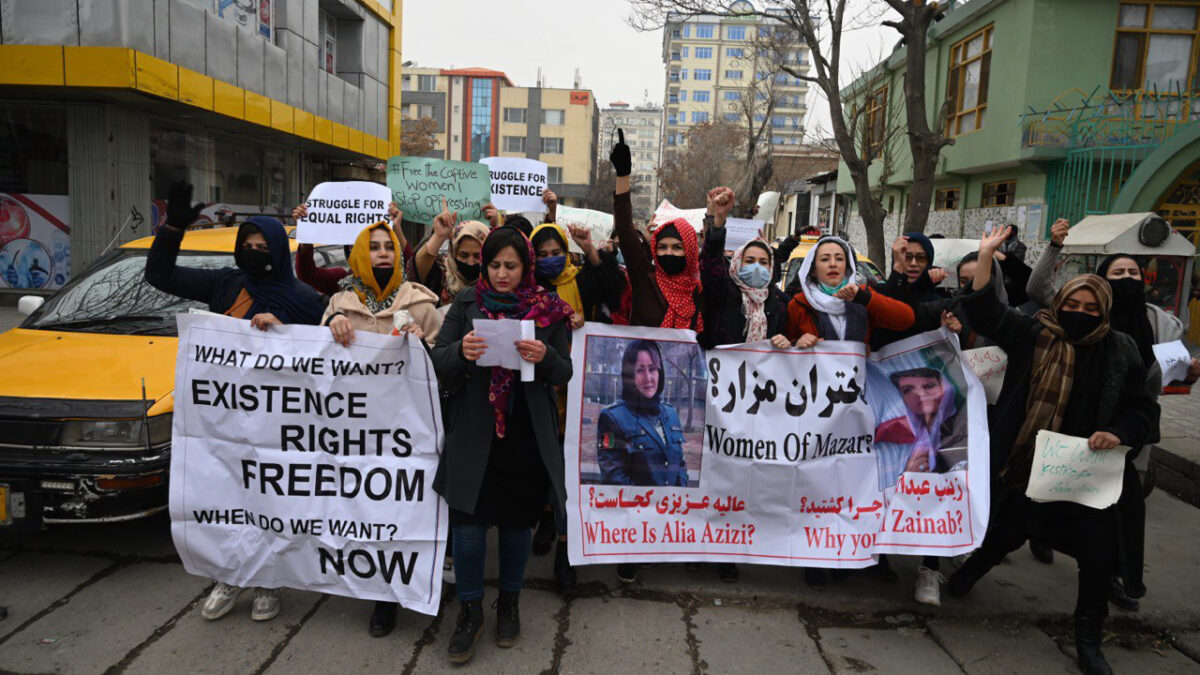Afghan women have been severely affected by the fall of Afghanistan to the Taliban when it comes to their role in society as thousands of them have lost their jobs and millions of girls have been deprived of secondary schooling over the last year.
Moreover, their presence in politics has changed into a dream now.
The two decades under the republic governments with the support of the international community were a unique opportunity for women to strengthen their presence in different sectors despite various problems they were faced with.
Afghanistan’s parliament
Until the last week of the fall of Kabul to the Taliban in August 2021, Afghanistan’s parliament, the lower house, had 249 members, including 69 women. Most female parliament members migrated to other countries following the fall of Kabul.
Nahid Farid, a former female MP from Afghanistan, said Kabul’s fall meant the end of all values in Afghan society.
“The fall of Kabul was not only the fall of a government and a system, but the fall of all hopes and values the people of Afghanistan made for themselves for years,” Farid said.
Government institutions
Afghanistan over the last year has been one of the few countries with no women in high-ranking government posts. Taliban in May announced a decree, saying women must be fully covered from head to toe — including their faces — to appear in public.
The two-page order stated that because “99 percent of Afghan women are already observing Islamic hijab there is no reason for the remaining one percent not to follow the Shariah-prescribed hijab.”
Afghan women said that the republic government with all its issues had provided a significant role for women in society but now, thousands of them have lost their jobs.
“Women had no restriction on their education (under the republic government)… We had women in the parliament. We had active women in the cabinet. We had women ministers, deputy ministers, judges, journalists,” said Nargis Mohmand, former chairperson of the media office of the Kabul Municipality, who has lost her job under the Taliban rule.
She added: “We had women deputy heads in 27 provinces and this vastly helped women’s improvement in the country.”
She said the Taliban’s ban on secondary schools for girls is “shameful.”
Women in ANDSF
About 5,000 women were serving in the Afghan army. A similar number were serving in the police. Despite issues, an activist said, women were happy about their role in the Afghan National Defense and Security Forces (ANDSF). However, this role has been reduced to nothing under the Taliban rule.
In Balkh province in the north, at least 150 women have remained in the police headquarters in the city of Mazar-e-Sharif. A female police officer who served for nearly 10 years under the previous government in Balkh, said she has returned to her job under the Taliban, but the environment is “different” than it was before.
Zainab, an alias for the woman, 38, said she returned to her job after nearly eight months, but she had “the fear” in her mind. However, she said, she remains committed to serving the people.
“I returned with the hope to serve the people, but the job is tough now,” she said. “Our appointment has been symbolic, and we are not allowed to take part in any mission.”
“We are only for searching. We are not kept updated on security issues that are relevant to women. All cases are followed by the Taliban members,” she added.
Women’s presence in sports
Afghan women made good progress in sports in two decades under the republic government, but have had no presence in this sphere over the last year. Members of major teams such as football have already left the country. Others have been “imprisoned” at home as some female sportsmen described.
The women’s wheelchair basketball team in Balkh province in northern Afghanistan is holding covert training sessions as their sports activities have been banned by the Taliban.
“We started doing the sport with the aim to change the wrong beliefs in society against women with disabilities, but our journey will be difficult going forward,” a member of the team said.
“95 percent of women lost their jobs in the media or left the country. We lost women’s presence in politics by 100 percent. Their presence was reduced by 90 percent in cultural and social activities. This is big damage to Afghanistan,” said Nasima Rawnaq, a women’s rights activist in Balkh.
Women’s protests
Afghan women held many protests under the Taliban’s rule to demand their rights and freedoms. But they were suppressed. In a recent protest on Saturday, the Taliban fired in the air to disperse a relatively small group of women protestors on Kabul streets.
“We held a protest today, but we faced violent treatment by the Taliban,” a woman protestor said on Saturday. “They opened fire on us. We hid in nearby shops to get ready for a return.”
“We women are awake, and we are tired of discrimination,” the women chanted. “We stay, and we will build.”
Many women protestors have been reportedly arrested and tortured by the Taliban but the group has rejected the allegations.
Women’s presence in arts and culture
Afghan women had a significant presence in music and other arts under the republic government. There has been no sign of that in the last year under the Taliban rule.
One instance is the Herat theatre that had at least 30 female actors. The number has reduced to four now, but they are yet to be allowed to appear on stage and perform, according to Fraidoon Fakoori, head of Herat theatre department.
Analysts and activists said the international community needs to pay serious attention to the matter; otherwise, Afghan women will be gradually removed from their society.





